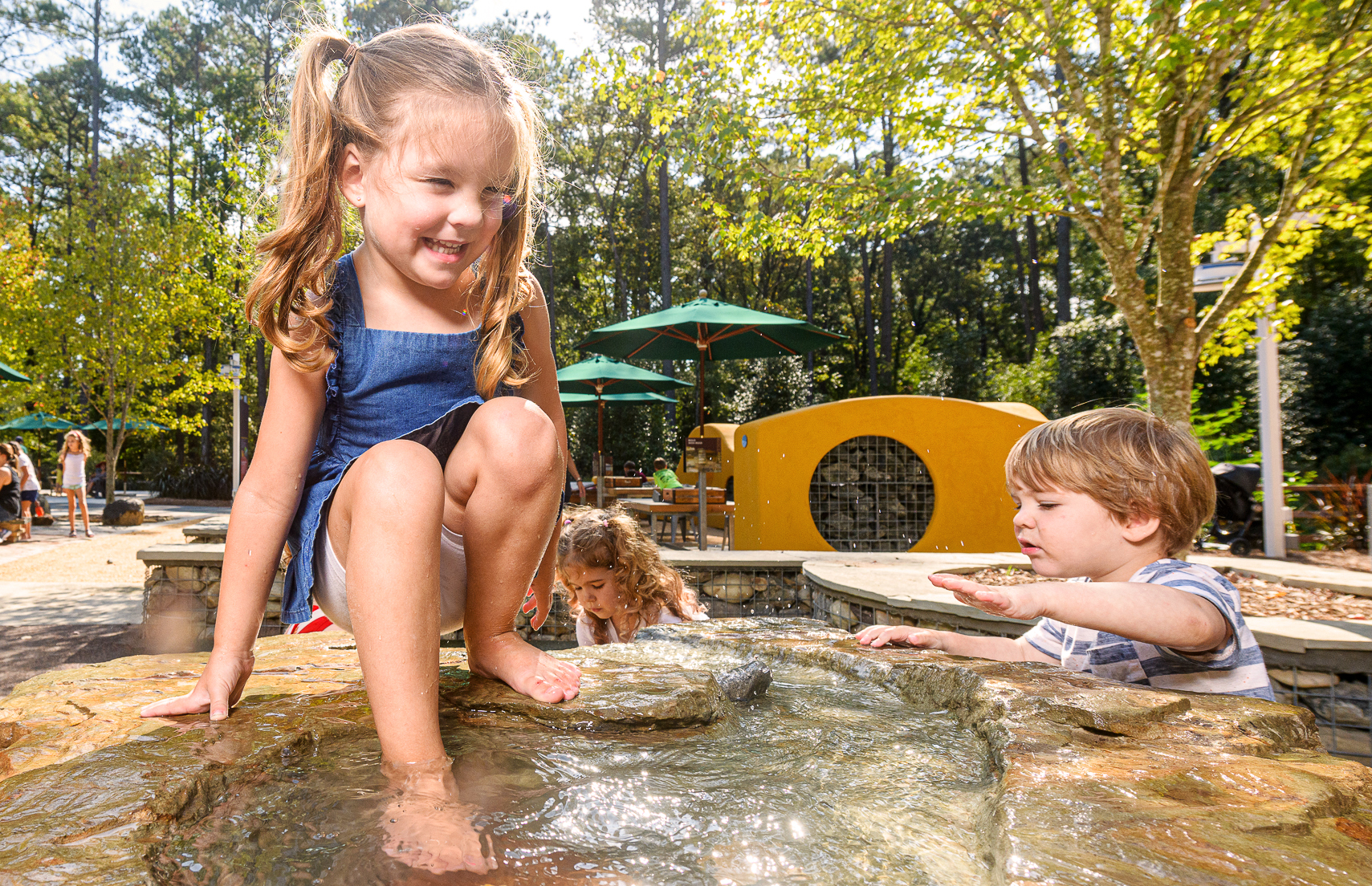The Company Supports the Earth Moves exhibit at Durham’s Museum of Life and Science.
By Therese Dunphy

Imagine an environment where children play among rocks and a waterfall, cool off in an erosion stream, explore sandstone caves and – along with their parents – learn about the region’s geology.
That’s exactly what can be found at the Earth Moves exhibit, which opened in 2019 at the Museum of Life and Science in Durham, N.C. The exhibit is partially funded by Martin Marietta. The company not only provided $100,000 over a five-year period, but also produced an in-kind donation with materials from 12 quarries throughout the Mid-Atlantic region.
The donations align with Martin Marietta’s focus on sustainability, which the company views through its four pillars of sustainability: safe operations, environmental stewardship, employee well-being, and community well-being, said John Gillan, head of sustainability. “This really fits largely in the community well-being pillar,” he added. “We want to be a responsible neighbor, and we understand we operate under a social license. We also get young minds engaged in science that’s related to our business.”
“We’re so grateful for Martin Marietta’s support for the construction of Earth Moves,” said Carrie Heinonen, the museum’s president and CEO. “Their partnership with the museum helped us create a fun, immersive, one-of-a-kind experience that helps a new generation of visitors better understand our changing planet.”
Creating a Vision
The partnership between the two groups began in 2018 when the museum reached out to Martin Marietta. Over the following months, museum and company officials engaged in communications about the vision for the project and what kind of materials would create the best display. The result? An educational exhibit that covers approximately one acre and showcases the area’s diverse geology of materials.
“When we started talking about it, we were talking about the main types of rock: sedimentary versus igneous or metamorphic,” said Josh Kirby, senior manager of geological services. “I think they had a good understanding of what they wanted to do education wise, and were pleasantly surprised by the diverse geology our many regional operations offer.”
Gathering Samples
Once the vision was set, Kirby reached out to plant managers throughout the region to gather boulders and other samples that met the size, dimension and weight requirements the museum outlined for the exhibit. It needed boulders that children could touch and climb on without creating a fall hazard, but also could fit on a four-by-four pallet to be moved around the site without the need for additional equipment.
Martin Marietta geologists worked with the plant managers to prepare samples, paying particular attention to gathering unique and interesting specimens such as coastal limestones that were full of fossils and samples with unique structural features. Once the boulders were gathered, the company staged them at a local site until the museum was prepared to take ownership. Soon after, the materials were delivered, and the museum’s landscape architect placed them around the site.
Building Awareness
Earth Moves opened to the public in 2019 and quickly became a popular fixture for the museum’s approximately 500,000 annual visitors. Kirby and his family attended a soft opening for the exhibit and saw first-hand how well received the interactive display was.
“I think the outdoor exhibits at the museum are among the most popular for parents and children,” he said. “It really brings awareness to our business.” Kirby noted that he got a lot of feedback from attendees regarding the wide range of geologies used to produce construction materials. “It’s important to be educational for children, but it’s informative for adults as well,” he explained.
While the company’s sustainability goal of community well-being may have been a driver in the partnership, community education is a significant additional benefit, said Lynn Dixon, manager, process excellence. “It gives us an opportunity to share knowledge of our products,” she said. “What we were able to do in terms of education and involvement of our locations – this is probably the biggest in-kind donation activity we’ve ever done.”
Therese Dunphy has covered the aggregates industry for nearly 30 years, while also serving multiple roles as a public official. As the owner of Stone Age Communications, she provides communications consulting services to help aggregate producers build stronger relationships within the communities they serve. She can be reached at [email protected].
